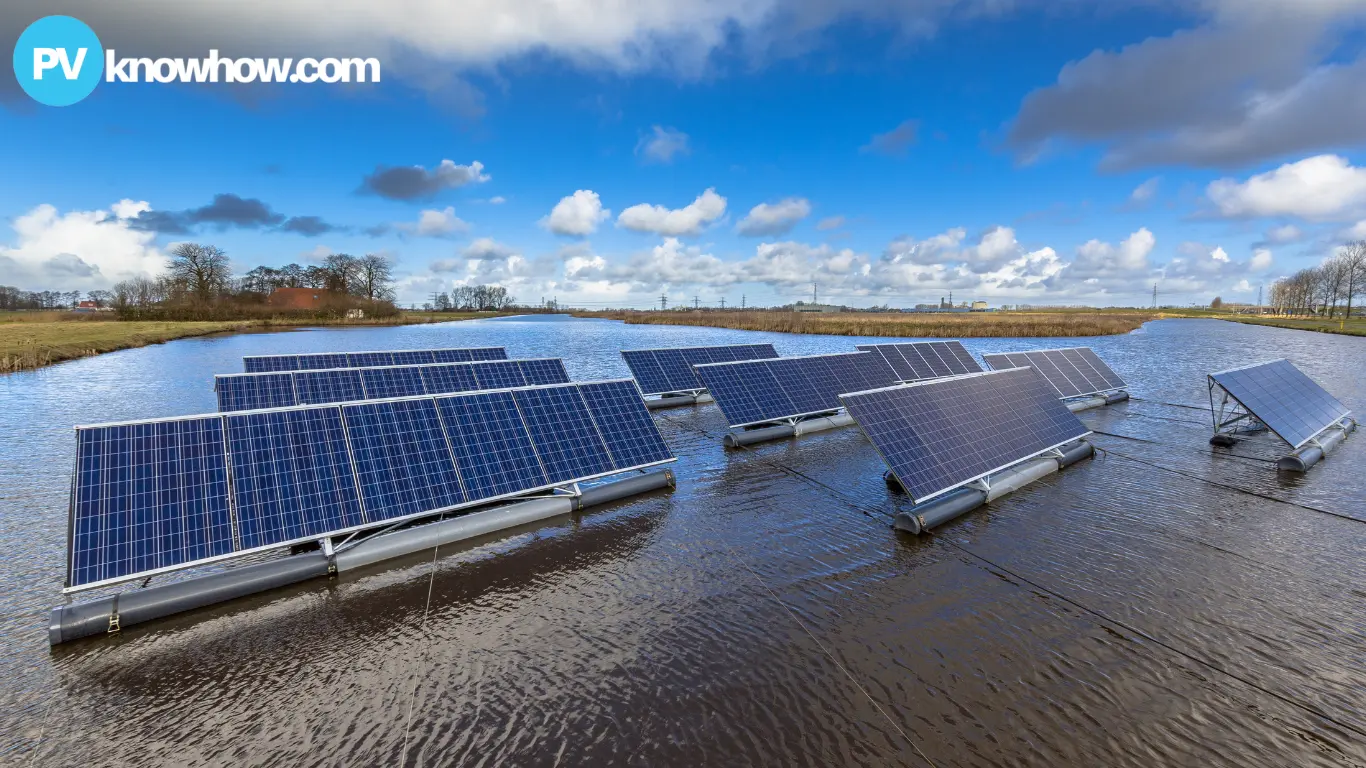The Government of Sindh is launching a floating solar power project at Keenjhar Lake, located 36 kilometers from Thatta city, marking the region's first significant step towards renewable energy. This groundbreaking initiative, led by the Sindh Department of Energy, aims to generate green energy through advanced solar technology.
Revolutionary Impact on Sindh's Energy Sector
A significant agreement was signed with Go Energy Pvt Ltd of Singapore to implement a floating solar power project, aimed at boosting the province's energy supply. In the initial phase, Sindh plans to generate 500 megawatts (MW) of clean energy within the next two years.

Floating Solar Panels
The generated power will be directly fed into K-Electric's network through the Sindh Transmission and Dispatch Company (STDC), thereby enhancing the overall power infrastructure of the province.
This project is expected to alleviate the burden of long hours of load shedding and power shortages faced by electricity consumers. Sindh Energy Minister, Nasir Hussain Shah, expressed the government's commitment to improving power infrastructure and ensuring a stable energy supply during the signing ceremony.
Sindh's Commitment to Renewable Energy
Minister Shah highlighted the Sindh government's proactive approach in addressing energy shortages. He emphasized the need for a sufficient gas supply from the federal government to effectively resolve energy issues in metropolitan areas.
Shah highlighted Sindh's pioneering role in transmission line development, noting it is the first province to lay transmission infrastructure while other provinces are still obtaining licenses. "Our priority is to complete all ongoing projects and deliver tangible benefits to our citizens," Shah stated, emphasizing his government's commitment to completing existing projects for the betterment of Sindh's residents.
Global and Local Context of Floating Solar Power
The International Energy Agency (IEA) reports that global floating solar power capacity nearly reached 3GW by the end of 2022 and is projected to expand significantly in the coming years. In line with this global trend, Sindh has been actively working to increase its renewable energy capacity in 2023 through various key projects, including the notable Floating Solar Power Project at Keenjhar Lake.
A World Bank report suggests that floating solar projects might consume up to 10% more energy than their ground-mounted counterparts due to evaporative cooling effects from the water.
Environmental Advantages
Another significant environmental benefit of the floating solar power project in Sindh is its potential to reduce water evaporation by covering portions of the water surface. This can be particularly advantageous in arid regions or during drought periods, helping to conserve valuable water resources in reservoirs and other water bodies.
Floating passive solar arrays can help improve water quality by limiting sunlight penetration, which inhibits algal photosynthesis. This reduction in algal growth can lead to cleaner water and decreased water treatment needs.
Floating solar power plants also have the advantage of requiring less land preparation compared to ground-mounted systems, as they are installed directly on water bodies. This minimizes disturbance to natural habitats and reduces the overall environmental impact of the project.
The Heat Island Effect
Additionally, floating solar panels can be particularly effective when paired with hydroelectric power plants. These two energy sources complement each other, resulting in a more balanced and reliable power supply.
When solar power output is reduced due to cloudy conditions, hydroelectric power can compensate, and vice versa. This synergy between the two energy sources creates a more stable and reliable energy supply system. Unlike ground-mounted solar panels, floating solar panels do not contribute to the urban heat island effect, which can lead to increased temperatures in urban areas compared to rural areas.
In contrast to ground-mounted solar panels, floating solar panels are installed on water bodies. This placement in cooler environments can help mitigate greenhouse gas emissions. By adopting floating solar technology, Sindh is leading the way in innovation and environmental sustainability in Pakistan. This initiative paves the path towards a more energy-secure future.
